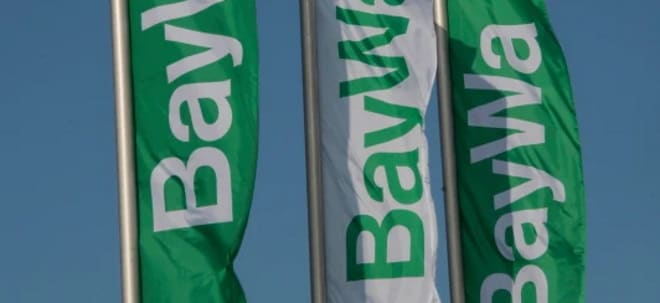TORONTO, ONTARIO--(Marketwire - Nov. 21, 2012) - CHAMPION IRON MINES LIMITED (TSX:CHM)(OTCQX:CPMNF)(FRANKFURT:P02) ("Champion" or the "Company") is pleased to announce the results of an Environmental Baseline Study completed by Roche Ltd. (Montréal, QC) at its Consolidated Fire Lake North flagship project near Fermont, Québec. Results confirm that the West Pit and East Pit Run of Mine ore and waste rocks are not acid generating in nature, nor do they represent a risk during mining operation with respect to heavy metals release.
These excellent results from the environmental characterization of the ore and waste rocks were obtained as part of an overall metallurgical testing program completed at the SGS Laboratories (Lakefield, ON) for the Feasibility Study in-progress. The results will benefit both capital and operating costs since no geo-membranes will be required beneath the waste dumps nor will any treatment of waste dump run-off water be needed. An additional benefit will be realized from the use of waste rock for construction of mine roads and associated mine and concentrator infrastructure. Therefore, no specific quarry will be required to generate the construction aggregates.
Representative samples of tailings were also subjected to trace metal analysis using Inductively Coupled Plasma Optical Emission Spectroscopy / Mass Spectrometry and the corresponding liquid fractions (decant solutions) were also characterized extensively.
Acid Rock Drainage ("ARD") static tests and Metal Leaching static tests were conducted on representative samples of waste rock, ore, tailings, and concentrate. The ARD testing consisted of Acid / Base Accounting and Net Acid Generation testing. Several, generally accepted, leaching procedures were performed, including the Toxicity Characteristic Leaching Procedure (EPA Method 1311), the Synthetic Precipitation Leaching Procedure (EPA Method 1312), and the Distilled Water Leach Extraction (Quebec CTEU-9).
Waste Rock Results:
Static tests performed on representative samples indicate no real potential to generate ARD, which is consistent with the very low sulphide content coupled with the presence of alkaline-type minerals that compose these rocks.
Based upon the Province of Québec's Ministère du Développement durable, de l'Environnement, de la Faune et des Parcs (MDDEFP)'s Directive 019 mine waste classification, the waste from the West Pit was leachable for barium. However, barium concentrations in the leachates were very low during the more representative kinetic tests (longer term humidity cells), which were carried out on composite samples from each of the West Pit and East Pit deposits.
Kinetic tests also confirmed that the waste carried no real potential to generate ARD as demonstrated by the resulting slightly alkaline pH (± 8.0) of the leachates and the very low sulfate concentrations. All metals (including Al, As, Be, Bi, Cd, Co, Cr, Fe, Hg, Fe, Mn, Mo, Ni, Pb, Se, Ti, V and Zn) showed very low concentrations in the leachates collected.
Based upon these results, waste rock can be used for construction (roads, dykes, etc.) and no special groundwater protection measures (e.g. geo-membrane) will be required at waste dump locations. Only suspended sediments could potentially be present in the water percolating through the waste dumps and a sedimentation pond will be sufficient for an effluent quality control.
Ore and Concentrate Results:
Ore sent to the pilot plant was separated by gravity separation and divided into concentrate and tailings. Both resulting products showed similar metal content with the exception of iron, which was obviously naturally more abundant in the concentrate. The ore and the concentrate carry no potential to generate ARD, nor did they release heavy metals through any of the leaching procedures.
These products can therefore be stockpiled without special groundwater protection measures (e.g. geo-membrane). Only suspended sediments could potentially be present in the water percolating through either the ore or concentrate stockpiles and again, sedimentation ponds would be sufficient for a control of the effluent quality.
Tailings Results:
Tailings samples were also generated from the SGS-Lakefield Pilot Plant test and showed that the tailings carry no real potential to generate ARD, nor do they release metals into solution. The liquid fraction of the tailings was slightly alkaline (± 8.0) which is good, and showed low concentrations for all analysed parameters.
On this basis, no special groundwater protection measures (e.g. geo-membrane) will be required at the tailings impoundment area. Moreover, no waste water treatment will be necessary to control dissolved metals. A sedimentation pond will be sufficient to control the water effluent quality.
Further to this, Champion is presently investigating possible methods for transferring partially dewatered tailings to the impoundment area to minimize the back-and-forth water transfer between the concentrator and tailings pond.
Thomas Larsen, Champion's President and CEO, remarked, "We are pleased to report results from the Environmental Baseline Study. It clearly demonstrates that mining operations can be conducted at Fire Lake North without negatively impacting the surrounding water bodies and that appropriate steps are being taken at this study level to minimize the impact of future mining activities as to protect the local environment."
Selected results from each test described above can be found on our website (www.championironmines.com).
Quelle:http://www.championironmines.com/vns-site/...pressdetail&…
Eisenerz-Fresser China
Eine höhere Stahlproduktion in China wird die Eisenerznachfrage anheizen. Das umso mehr, da die Qualität der hauseigenen Eisenerz-Vorkommen abnimmt. Das ist gute Kunde für die nordamerikanischen Eisenerzprojekte.
21. November 2012 um 06:55 von Ingrid Heinritzi 0
OpencastGute Kunde aus dem Reich der Mitte! Ein dem Handelsministrieum von China nahe stehendes Forschungsinstitut sieht für 2013 eine rosige Zukunft für die Eisenerznachfrage. So prognostiziert das DPPC, dass China im nächsten Jahr bis zu 800 Millionen Tonnen Eisenerz einführen müsse. Dies wären immerhin 4 Prozent mehr als für 2012 erwartet wird. Zum einen die steigende Stahlproduktion und zum anderen die Limitierungen bei der heimischen Erzeugung von Eisenerz guter Qualität seien dafür verantwortlich.
Und der Stahl wird nicht nur als Beschäftigungstherapie hergestellt. China braucht diesen Grundstoff für seine Infrastrukturprojekte. Vor allem der Ausbau des Eisenbahnnetzes, aber auch der Straßenbau würden zu einer Wiederbelebung der heimischen Stahlnachfrage vor allem bei Stahlplatten, Stäben, Stahlseilen und -rohren führen.
Obwohl vielerorts viel über den Wachstumsrückgang Chinas zu lesen ist, dürfte dort die Stahlproduktion 2012 um 3 Prozent steigen und 2013 um weitere 4 Prozent. Das wären dann rund 750 Millionen Tonnen Stahl, so das DPPC. Die Eisenerzproduktion im Reich der Mitte erreicht aber nur 400 Millionen Tonnen. Diese Lücke müssen ausländische Importe füllen. Diese kommen zwar vor allem aus dem asiatischen Raum und auch aus Südamerika. Doch auch die nordamerikanischen Eisenerzprojekte werden natürlich durch diese Nachfrage aufgewertet. Denn einem stark fallenden Eisenerzpreis steht die DPPC-Prognose konträr gegenüber.
Nicht zuletzt die qualitativ hochwertigen Eisenerzvorkommen im Norden der kanadischen Provinz Quebec sollten dadurch langfristig lukrativ ausgebeutet werden können.
http://www.rohstoff-investingnews.de/eisenerz/eisenerz-fress… |


 Thread abonnieren
Thread abonnieren




